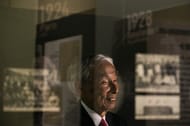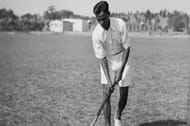Following the Olympics conducted in Paris, they arrived in Amsterdam in 1928. It wouldn't be wrong to call them a revolution. The Amsterdam Games were nothing less than a revolution.
For the first time, the Olympics had a fixed time, a fixed format, and a fixed track. The races were officially run for the first time on a fixed ellyptical track that measured 400m in total. Earlier, races were run on irregular tracks that didn't exactly measure 400m. Before the Mexico Olympics, rough cinder tracks that measured 400me were the standard norm.
For the first time, the Olympics had the classic parade of nations. The parade of nations previously did exist, but in Amsterdam, it officially began with Greece, and ended with the host Netherlands. This tradition has never broken since then.
The Amsterdam edition also saw the rise of Asia. Before the Amsterdam Olympics, the Summer Games were traditionally a European reserve. However, it changed in Amsterdam. An unassuming college student from Waseda University in Tokyo, Mikio Oda won the hop, step and jump event. Today known as the triple jump, it was the first time an Asian won any kind of Olympic medal individually.
However, Mikio was not the only wonder boy who mesmerized the audience there. Field hockey once again returned to the Olympics. With that, arrived the British India team. Led by Jaipal Singh Munda, the side comprised some of the best players in the world, who shocked the world with their brilliant stick work.
Legend has it that when the British team competed against India, they were so embarrassed by their efforts that they never competed in the sport, as long as British India competed on field. Great Britain competed in field hockey only in 1948, when India freed itself from British rule.
India crushed every opponent in their journey to a historic gold medal, scoring 29 gold medals, while none of the opponents could score even a single goal. The Amsterdam Games also saw the rise of a legendary player. His name was Dhyan Chand, who had scored 14 of those historic 29 goals. Once, even the legendary cricketer Sir Donald Bradman was compelled to praise his efforts.
Here are some more interesting facts from the 1928 Olympics, held in Amsterdam.
First standard Olympic tracks
![1928 Summer Olympics - The first standardized Olympics with a standard track [Image for Representational Purposes]](https://staticg.sportskeeda.com/editor/2021/07/f28ee-16263104756254-800.jpg?w=190)
Before the Amsterdam edition, Olympic races were not run on regular tracks. They did not have a proper format, nor did they have a standard measurement. However, in Amsterdam, things changed for the better. Also, for the first time, the Olympics began and ended within a fixed format of 16 days, a tradition that has rarely changed ever since.
For the first time, races were run on a proper, standard track that measured exactly 400m in distance. The event was also the first edition where official cinder tracks were used. For those unaware, cinder is a track with a mixture of three layers.
The first layer comprises rubble and stone. The next layer comprises cinder, i.e. partially burnt ash. The third layer is of cinder mixed with clay, black loam etc. Before the 1968 Mexico Olympics, cinder tracks were the standard norm. They were tougher to run on, and they could be affected by the weather as well.
Rise of Asia

When the Olympics were conceptualized, the founder, Pierre de Coubertin, aimed for a diverse Olympics, where everyone had a fair chance. However, like the host cities, the Olympics were mostly a European reserve. Nobody had even attempted to win a medal of any color, forget even challenging the Europeans or Americans.
However, at the Amsterdam Olympics, things changed for the better. While the Stockholm Games saw Asia's participation, Amsterdam saw their rise. In the men's hop, step and jump, now known as men's triple jump, an unassuming student stepped up for competition. His name was Mikio Oda.
Mikio had attempted his luck in the long jump and high jump. However, he failed to make it. But hop, step and jump was his favorite. He even reached the finals in the previous edition at Paris. Mikio tried his best, and jumped to a distance of 15.21 meters.
Not only was this a huge distance, it also won him a gold medal. For the first time, an Asian man had become an Olympic champion. Mikio became an overnight sensation. He further jumped to the distance of 15.58m, creating a new world record in 1931 by the time he called it quits. When the Olympics came to Tokyo, the Japanese flag was raised exactly to a height of 15.21m, in a tribute to his legacy.
First Olympics with the iconic Parade of Nations
![1928 Summer Olympics - The first Olympics with the iconic Parade of Nations [Image for Representational Purposes]](https://staticg.sportskeeda.com/editor/2021/07/31d25-16263107085844-800.jpg?w=190)
Often you have noticed the classic Parade of Nations at the Olympics. In this, the originator of the Olympics, Greece always comes first, and the host of the Olympics, comes last. This did not happen in the previous editions, but the Amsterdam edition changed it for once, and for all.
The parade of nations did begin at the Olympics by 1896 itself. However, the iconic tradition of sending Greece first, and the host nation at the last came to Amsterdam. Greece came in with the honor of hosting the first ever Olympics. The Netherlands, by virtue of being the host country, came in last.
This is a tradition that has never been broken since. In fact, be it the Commonwealth Games or other continental games, this tradition has been imitated a lot. In a way, the British Empire Games, now known as the Commonwealth Games, somewhat owes its existence to the same parade of nations. For a while, in some Olympics, athletes even dipped their flags in front of the host country's head, as and when it was required.
Baby rise of professionalism
The Olympics have had a major conflict with professionalism. The founder, Pierre de Coubertin, insisted on amateurism. The focus on amateurism was so prevalent, that initially, there were no medals for those who came third in the first ever modern Olympics held at Athens in 1896!
Another major conflict between amateurism and professionalism emerged in 1912. American athlete Jim Thorpe created a major sensation when he won both the classic pentathlon and the decathlon. In 1913, it was discovered that he had once played minor league baseball, though that was outside the required ambit of professionalism. As a result, Jim Thorpe was stripped of his gold medals.
In 1928, however, a baby step towards embracing professionalism was taken up. For the first time, Coca-Cola professionally sponsored these Olympics.
Although this wasn't a big thing, it was still a major departure from the previous stance. In the coming years, professionalism in the Olympics wasn't such a huge crime as it was deemed in the early 20th century. Today, professionals can compete with as much zeal as amateurs!
The magic of Hockey India

With the Amsterdam Games, field hockey also came back to the Olympics. Nine teams participated in the event. Czechoslovakia withdrew before the final draw. The first official hockey competition was won by a British colony, India. They defeated hosts Netherlands by 3-0 to win the title.
So, what's special about that? What the USA does to Olympic basketball, is India to field hockey. The Amsterdam Olympics saw the rise of the phenomenon called India. Then, under British rule, they had dazzled everyone with their stickwork and their play to the extent that their own colonial masters withdrew from the Amsterdam Games. Until India became free from British rule, the Britishers never played against their own subjects. Such was the charisma of Indian hockey.
Led by Jaipal Singh Munda, a tribal player, the team struck 29 goals in all. What's better, they didn't even concede a single goal. Of those 29 goals, 14 were struck by just one man alone. His name was Dhyan Chand, who later became famous as the "Wizard of Hockey". The Dutch authorities even confiscated one of his sticks, and broke it to check if there was any magnet inside. This was because the ball never left his stick during the dribbling.
